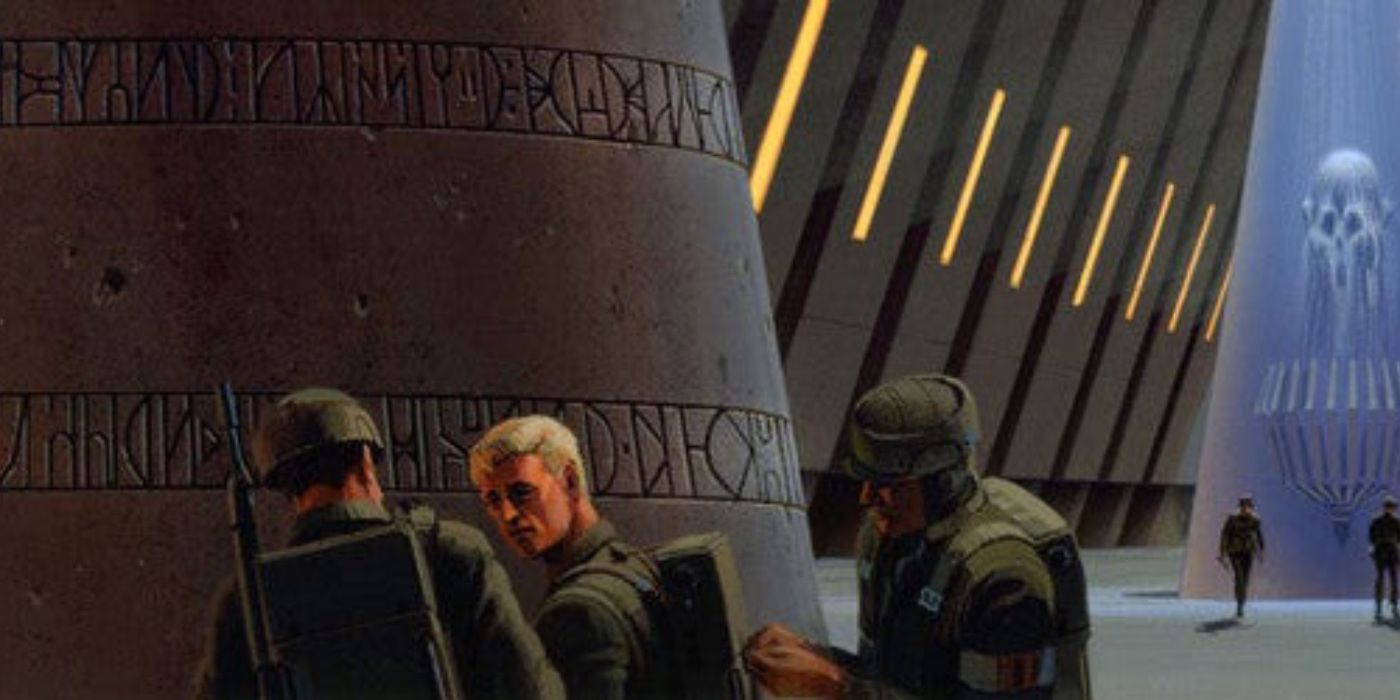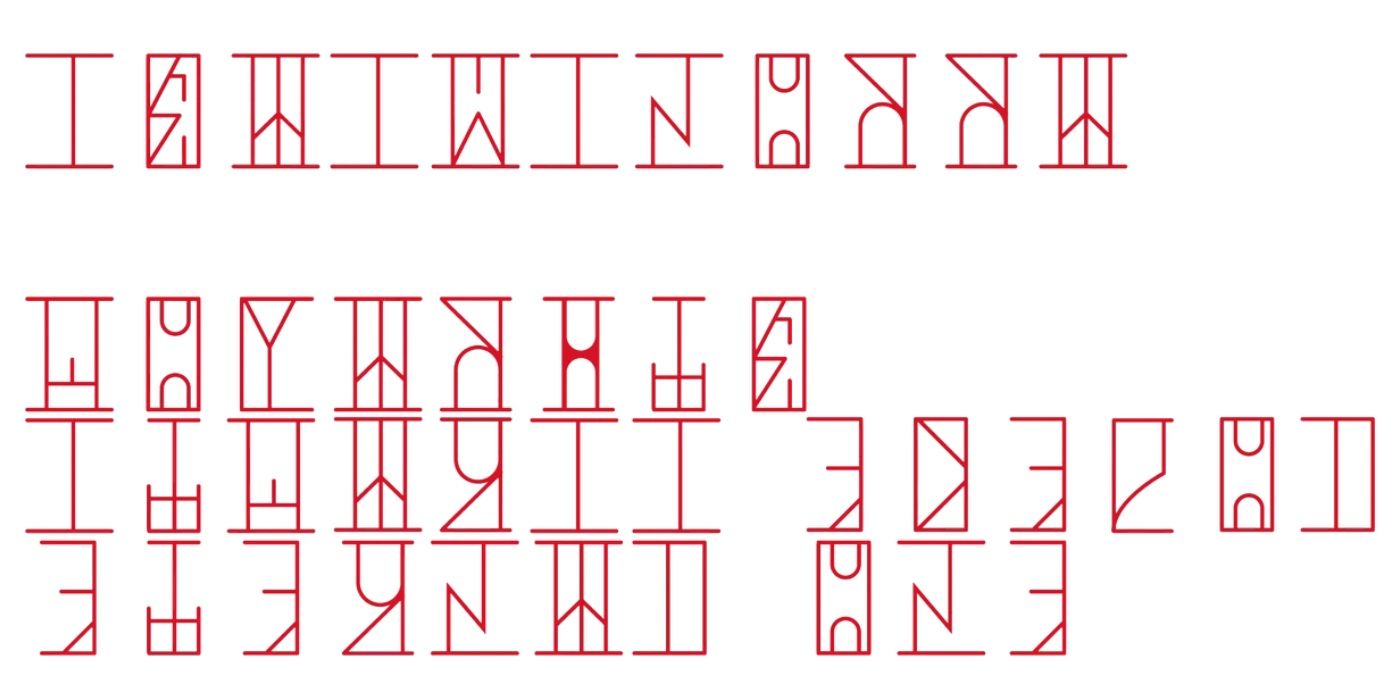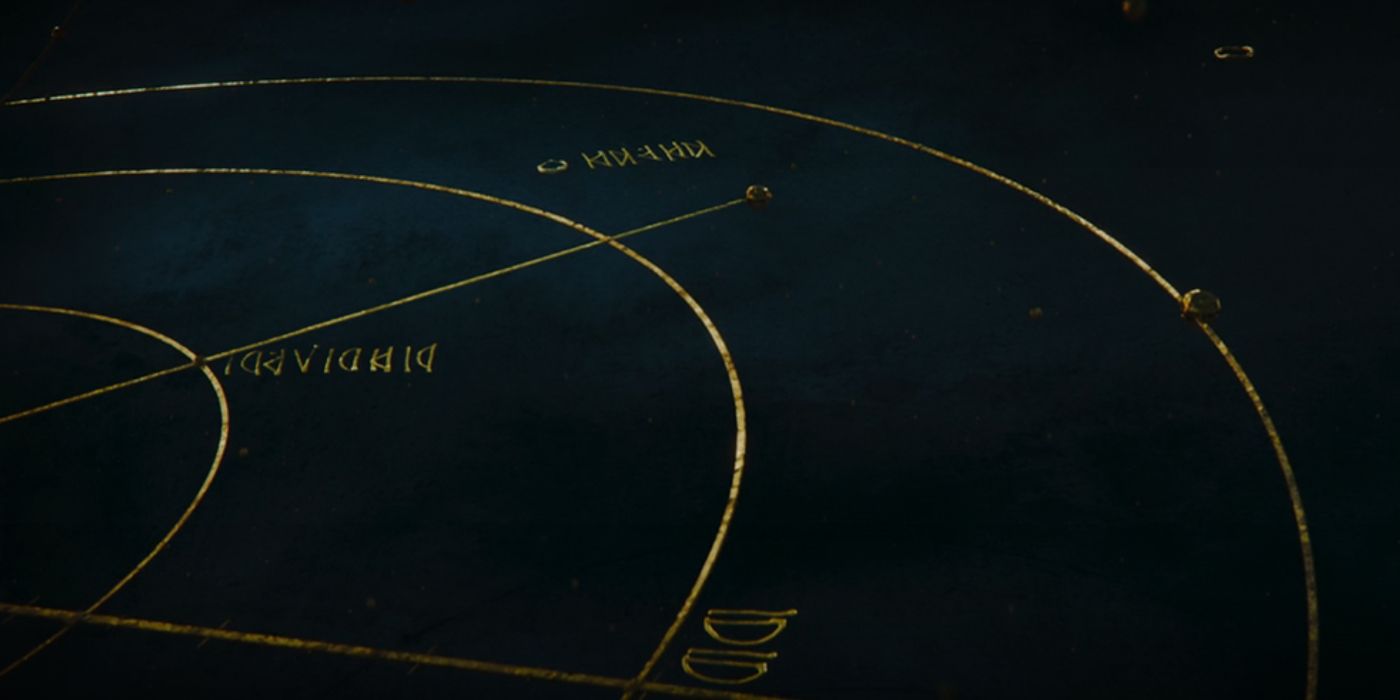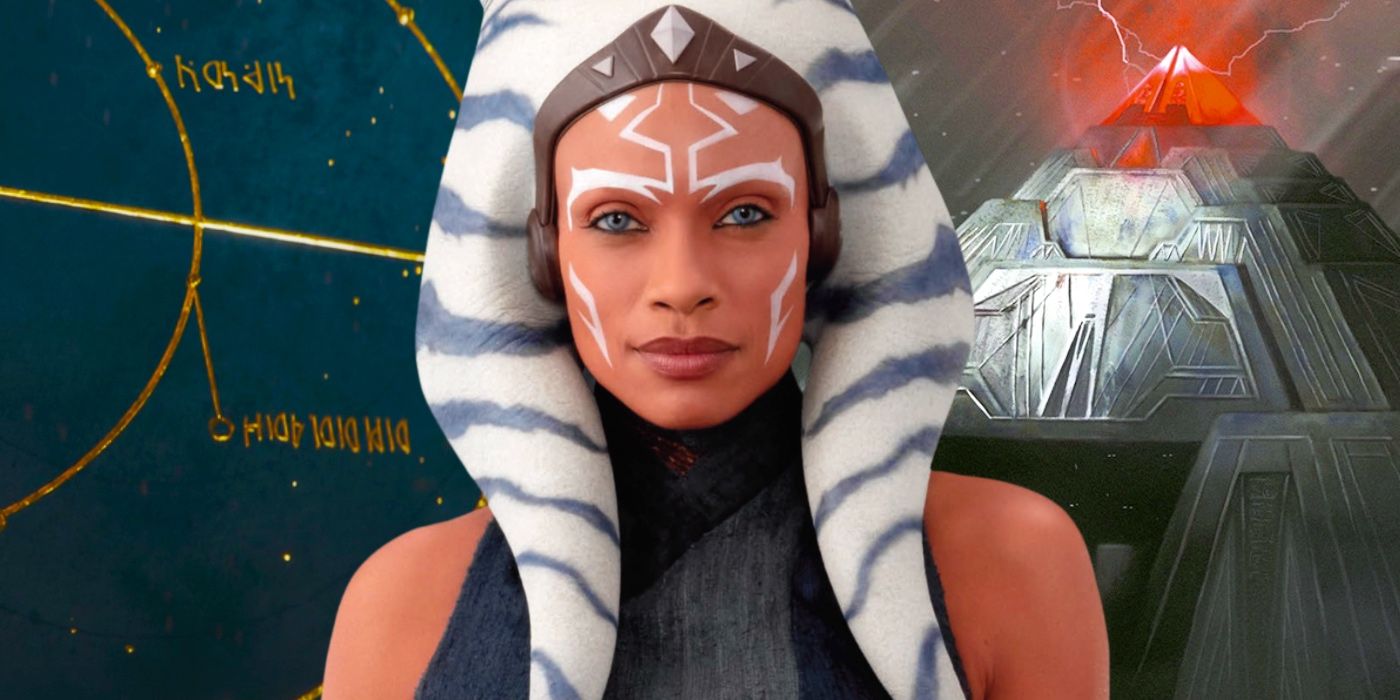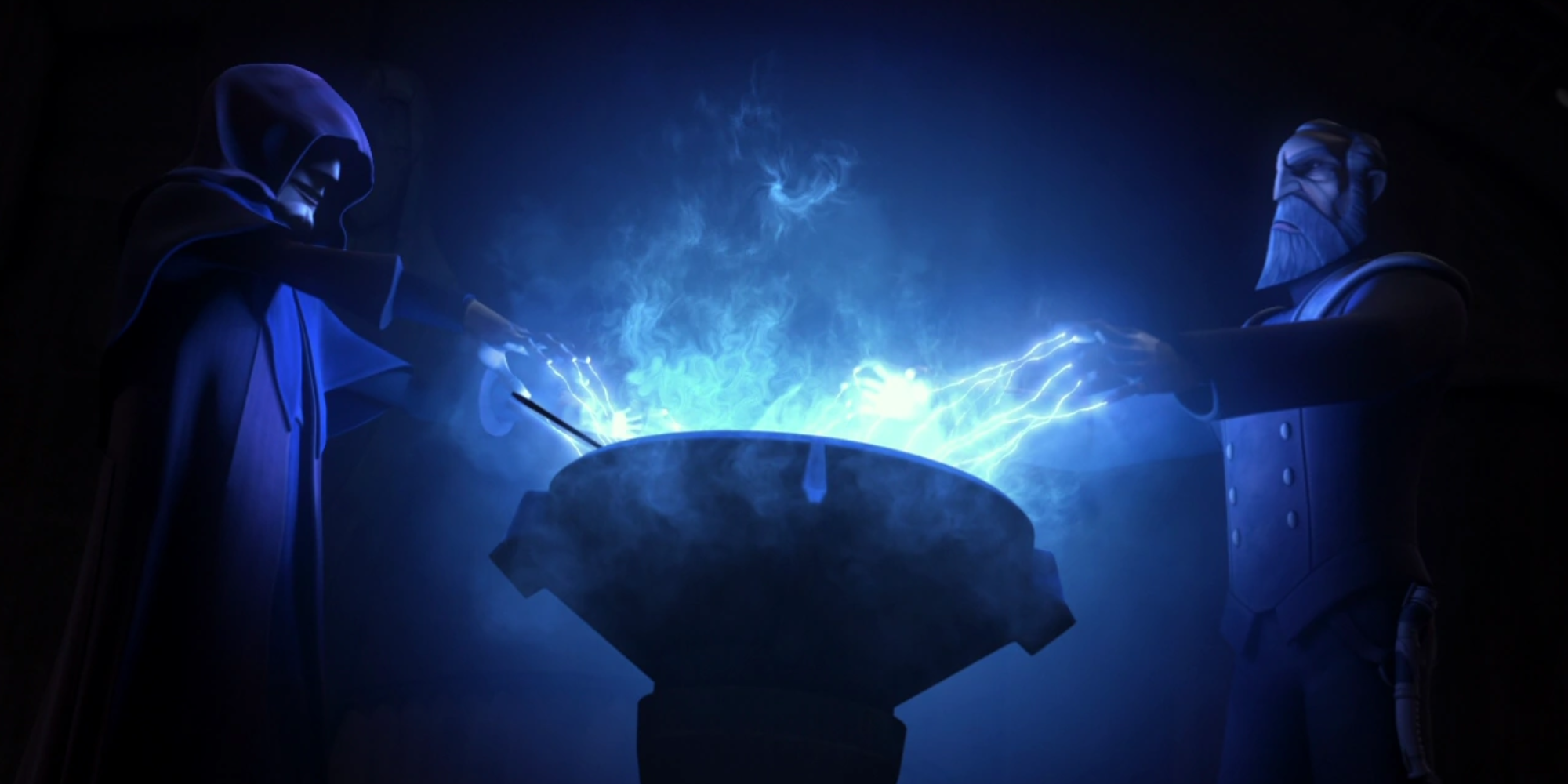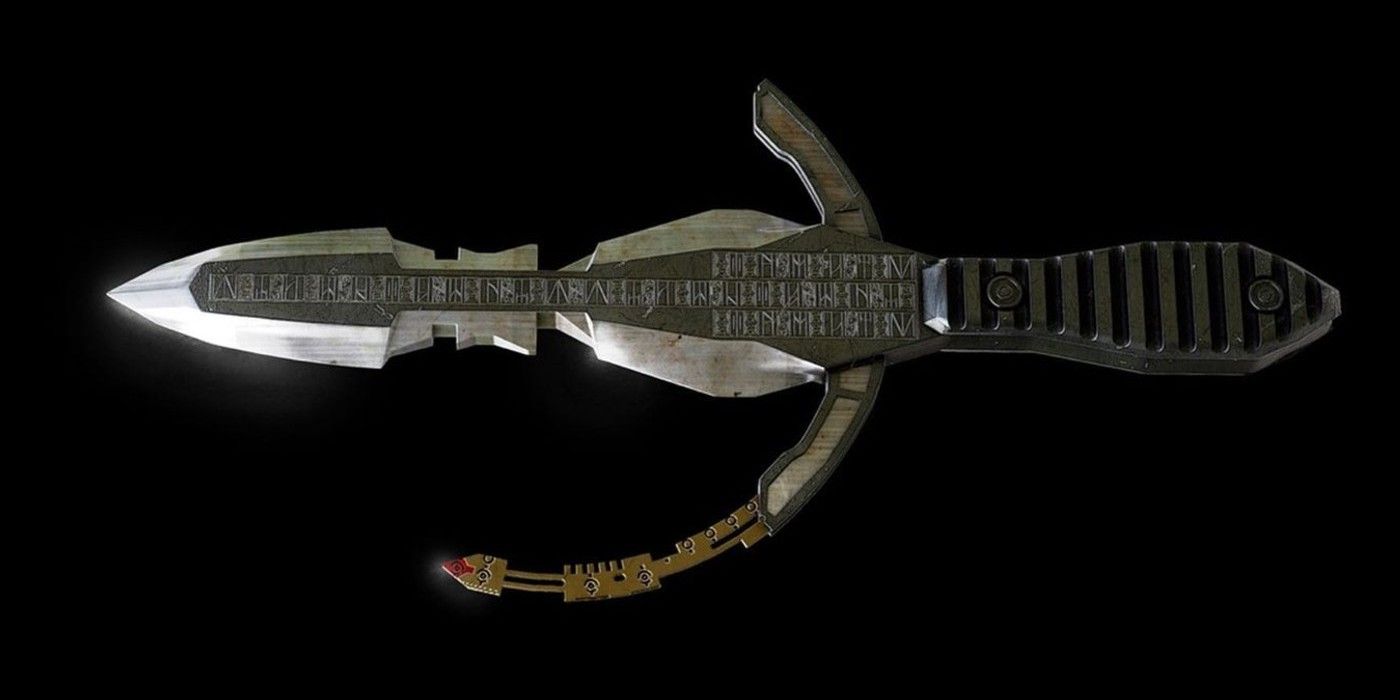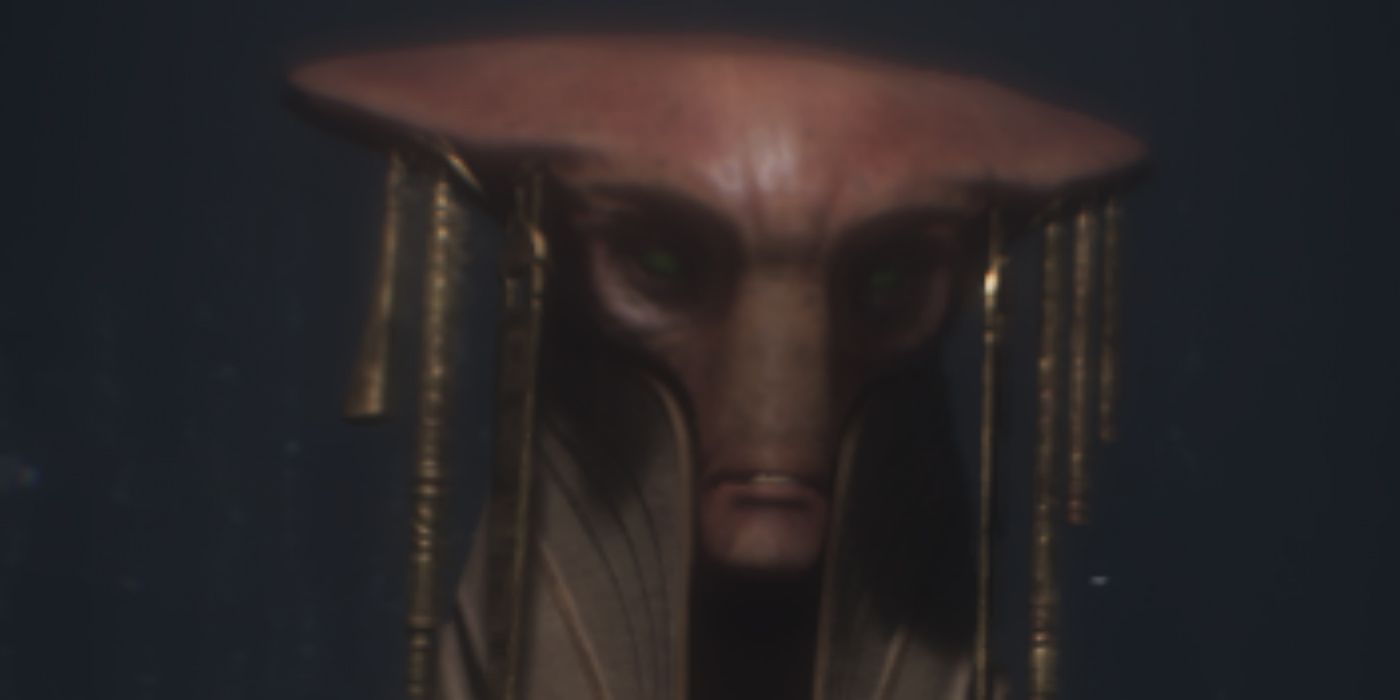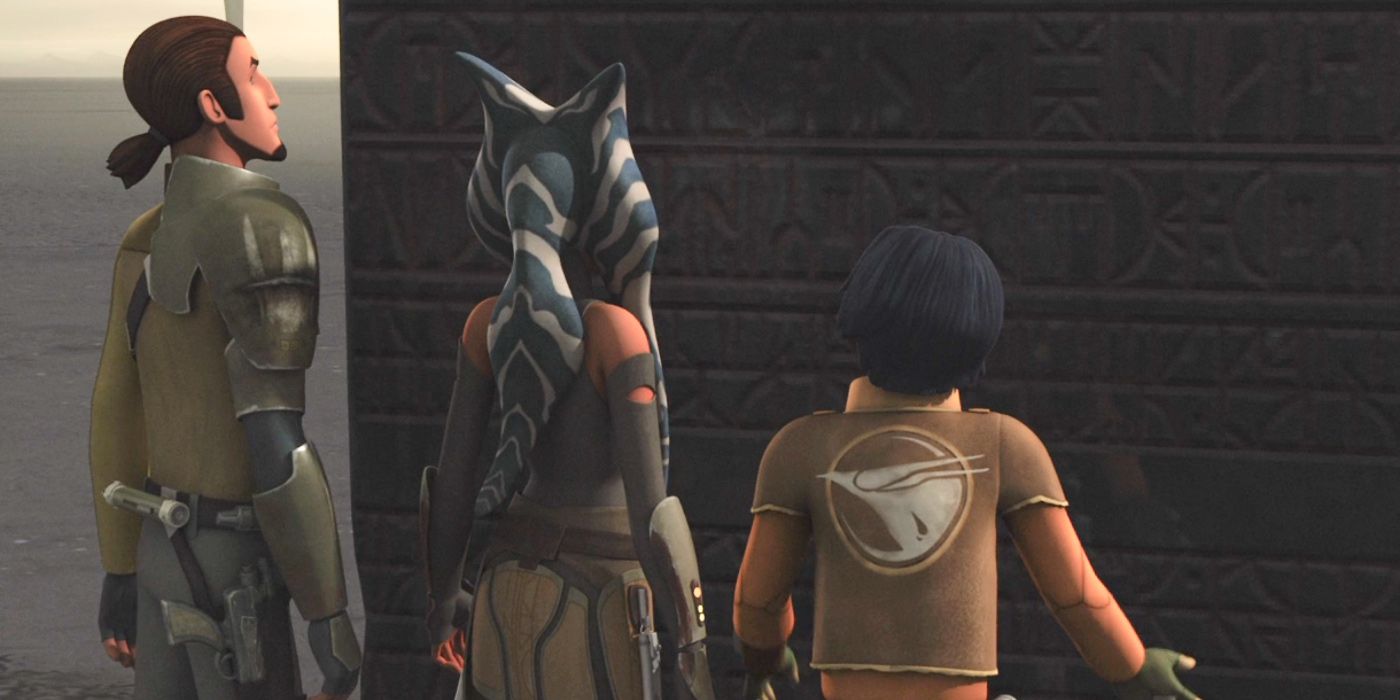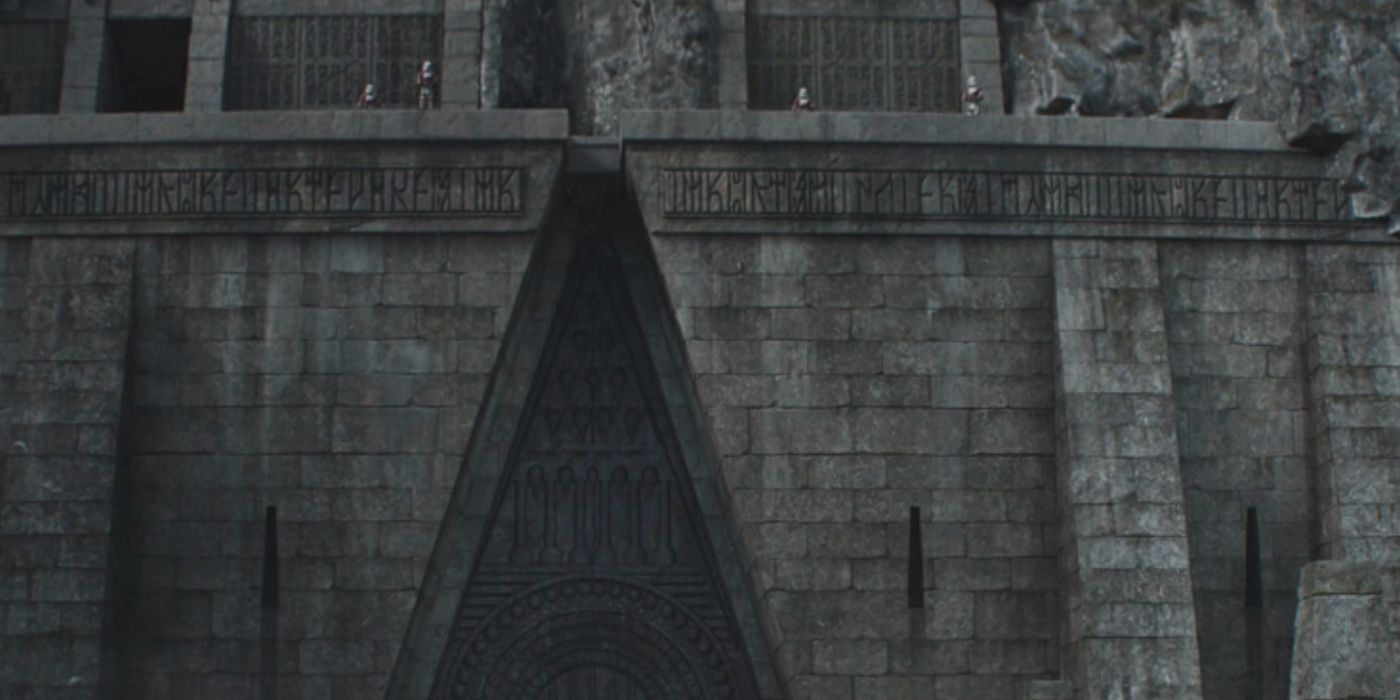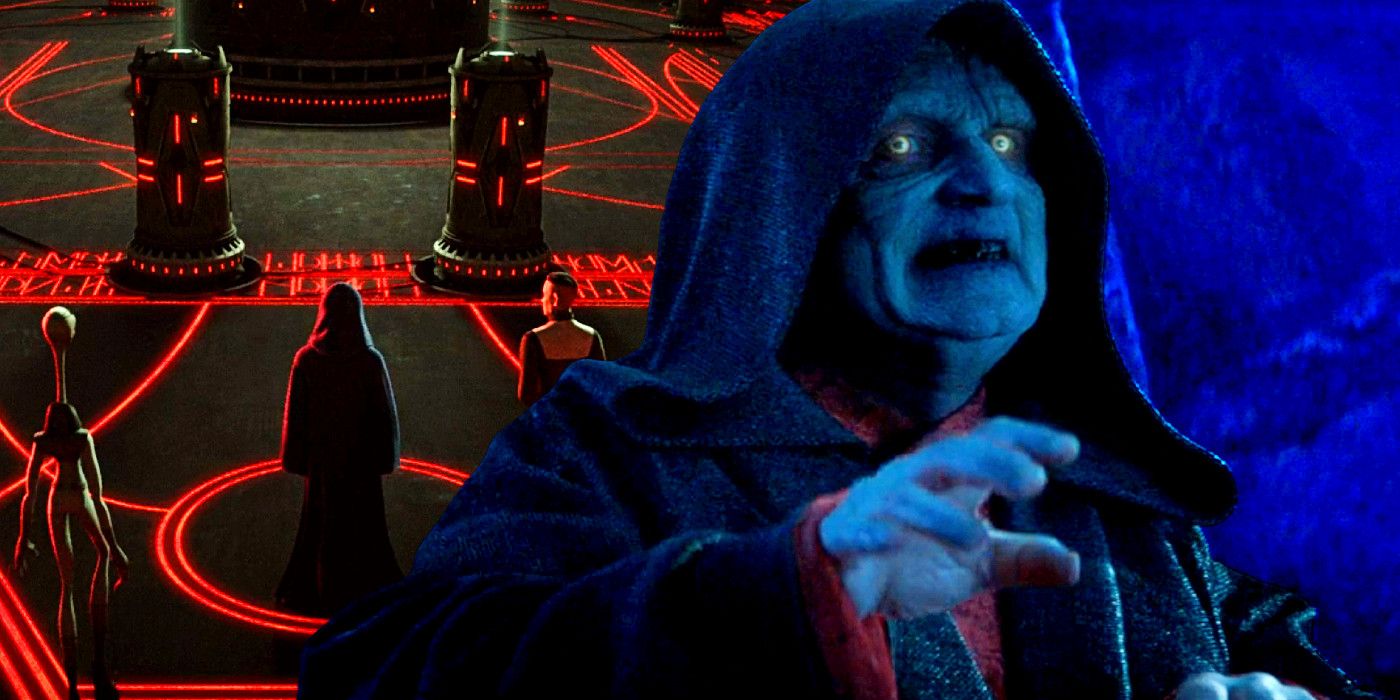Star Wars’ Sith Language Is The Key To The Galaxy’s Past & Future
Summary
- Sith language developed in Star Wars Legends now utilizes more classic runes and new symbols.
- Ur-Kittât seen in recent media like Ahsoka can be translated using a star map for exciting results.
- Sith language has gained importance in Star Wars lore, offering clues for future storylines.
Star Wars’ language of the Sith may hold the key to the galaxy’s past and future. Known as the Old Tongue or ur-Kittât, the language of the Sith has its own written language and unique alphabet, and can also be spoken to a certain degree. That said, it has evolved over the years with different versions and translatable styles. Most recently, 2023’s live-action Ahsoka series provided some major clues for the future while offering an easy means to translate the runes seen on-screen.
Existing for nearly as long as the Jedi Order in the Star Wars timeline, the Sith have their own traditions and culture steeped within the dark side of the Force. This includes their very own language and writings. However, there have been clues that ur-Kittât may have originated from a much older language, one sourced outside the known Star Wars galaxy. Keeping that in mind, here’s the history of the Sith language in Star Wars explained, as well as how to translate the most recent and canonical version seen in the established Star Wars canon.
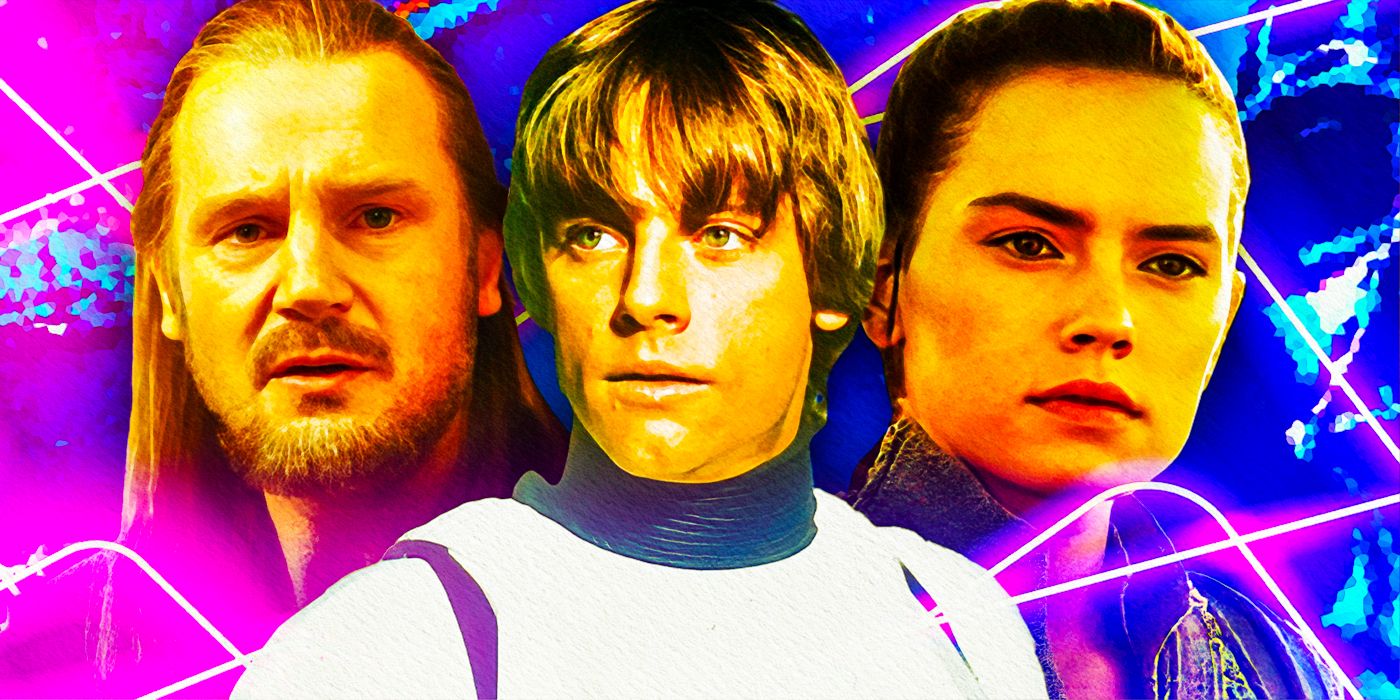
Star Wars Movies In Order: How To Watch Release Order, Chronologically & With The TV Shows
What’s the best way to watch Star Wars? Here’s everything you need to know to watch in release or timeline order, and how to include the TV shows.
The Sith Language Was Originally Created In Star Wars Legends
Created For The Book of the Sith
The very first examples of the SIth language can be found as early as Dark Horse Comics’ Star WarsTales from the 90s. However, it was largely gibberish up until 2010 when the Sith language became a more official language thanks to Ben Grossblatt, a senior editor who worked on both The Jedi Path: A Manual for Students of the Force and Book of Sith: Secrets from the Dark Side. Having multiple linguistics degrees, Grossblatt created an official alphabet and language for ur-Kittât. To that end, his process was revealed in full in Star Wars Insider 134, confirming just how intentional he was in its creation:
“I imagined a tough—but not barbarous—language, one that could convey a kind of confident, elegant cruelty. And Sith would have to ring with authority so you could envision it functioning among elites of the dark side the way Latin functioned in Europe for centuries: as a repository of culture and learning.
”
Wanting to develop a pronounceable language for the Sith while also having words and letters that would have been feasibly etched on the pedestals and columns of ancient dark temples, Grossblatt succeeded in providing a language and alphabet that had realistic depth. It certainly has more nuance beyond being a two-dimensional and “cartoonish language spoken by the bad guys”. However, the Star Wars canon reboot following Disney’s purchase in 2012 saw ur-Kittât receiving more of a focus on-screen (along with a visual overhaul).
Star Wars Canon Has Changed The Sith Language For The Better
ur-Kittât Is Now Translatable Using More Classic Runes (And New Symbols)
As seen in Star Wars Rebels season 2’s “Twilight of the Apprentice” arc, Ahsoka Tano, Kanan Jarrus, and Ezra Bridger visit the Sith world of Malachor. To that end, one of the first things they find is a stone column bearing “The Old Tongue of the Sith” according to Ahsoka. That said, the symbols on the column looked less like the known Sith alphabet developed for Legends’ Book of the Sith and more like the classic runes drawn by original Star Wars concept artist Ralph McQuarrie, presumably a creative decision made by showrunner Dave Filioni as a fun nod to the legacy of Star Wars and its origins.
At the same time, Ahsoka can be heard speaking a few of the carved words out loud in “Twilight of the Apprentice”, and Palpatine himself is heard speaking ur-Kittât in both The Clone Wars season 6 and later on in Star Wars Rebels season 4 when he attempts to enter the World Between Worlds using Ahsoka and Ezra. Despite being shown in multiple pieces of Star Wars media since that point, this seemingly new and canonical version of ur-Kittât had yet to have letters assigned to its new runes…until 2023’s Ahsoska. Now, several Star Wars fans have managed to use the many runes featured in the live-action series to decode this new runic alphabet, resulting in some exciting translations.
Translating the runic alphabet can largely be done using the star map in Ahsoka’s end credits, using the names of the featured planets to assign each rune to its corresponding letter in the English alphabet. However, this new alphabet does feature its share of more unique, almost Norse-like, symbols beyond those seen in McQuarrie’s art which were purely decorative at the time). This was likely motivated by Filoni as well to help develop the runes as an official alphabet considering his known love for Norse mythology.
Thanks to Ahsoka, this new version of ur-Kittât seen on-screen can be translated by fans. However, this is assuming Lucasfilm puts in actual words to translate and not just decorative gibberish. This has been the case in some places, such as EA’s Jedi: Fallen Order and Jedi: Survivor or Ahsoka’s various character posters.
The Sith Language Has Become The Key To The Dark Side
Clues For The Future Of Star Wars?
Now with its McQuarrie-inspired runic alphabet in the established Star Wars canon, it does seem as though Lucasfilm has been placing a greater focus on the Sith Lords’ ur-Kittât in recent years. After all, the writing on a Sith blade was a key component of The Rise of Skywalker’s plot, and the novel Rise of the Red Blade confirmed that the language of the Sith is imbued with its own dark power with the ability to corrupt. Beyond the identification of planet names, Ahsoka also featured the Old Tongue etched on the Nightsisters’ temple on the extra-galactic world of Peridea, the inscription reading:
P)RAISE KUJET RULER OF ALL MAY HIS REIGN LAST FOR AL…
Kujet was the ancient Zeffo dark side wielder whose remains were kept on the Nightsisters’ world of Dathomir, as seen in EA’s Jedi: Fallen Order game. As such, this translation further connects both the Nightsisters and the Zeffo, while also implying that ur-Kittât was perhaps adapted by the Sith and taken from a far more ancient language sourced from beyond the known Star Wars galaxy. After all, the writings are carved on a temple located on Peridea. At any rate, it will be very exciting to see what clues about Star Wars’ future can be learned through the translation of ur-Kittât when and if the language of the Sith is featured in upcoming projects (perhaps The Acolyte?).




